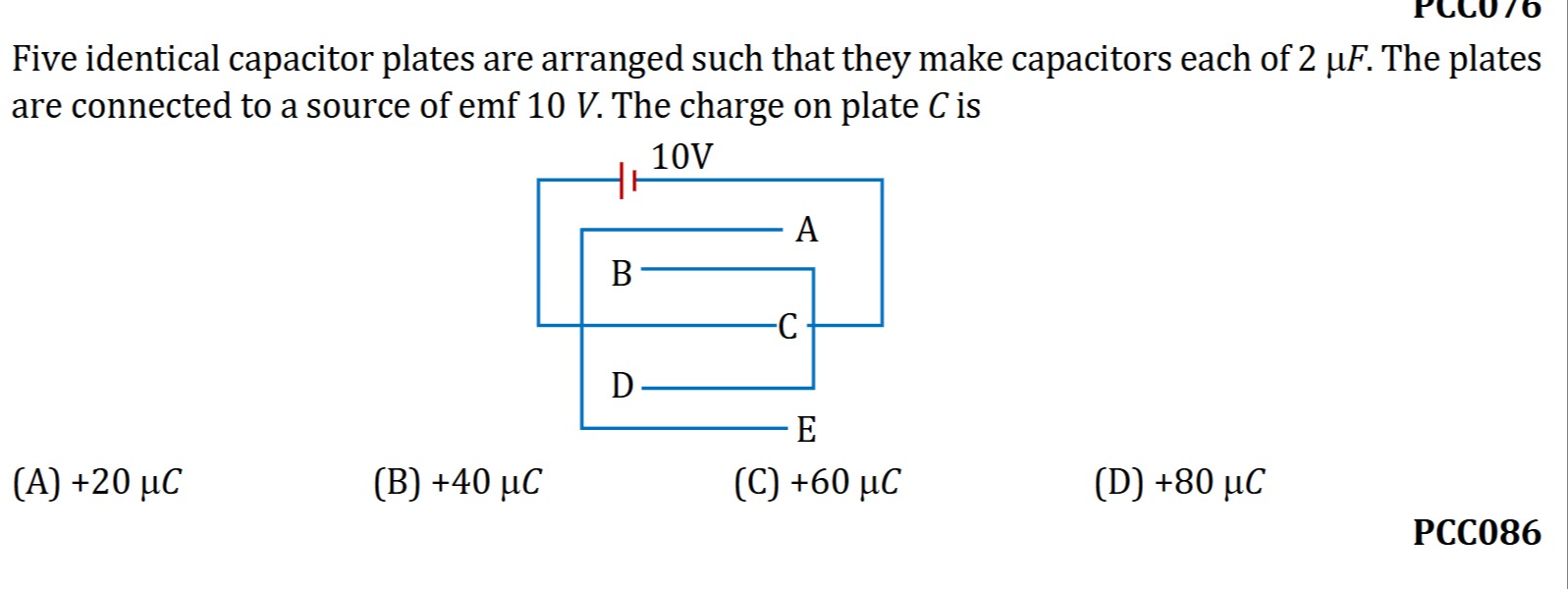Question
Question: Five identical capacitor plates are arranged such that they make capacitors each of 2 $\mu$F. The pl...
Five identical capacitor plates are arranged such that they make capacitors each of 2 μF. The plates are connected to a source of emf 10 V. The charge on plate C is

+20 μC
+40 μC
+60 μC
+80 μC
+40 μC
Solution
The problem describes five identical capacitor plates A, B, C, D, and E. Each adjacent pair of plates forms a capacitor with a capacitance of C=2μF. The plates are connected to a 10V EMF source.
The diagram and problem statement imply a specific arrangement where plate C is situated between plates B and D. We assume that plate B is connected to the positive terminal of the 10V source, and plate D is connected to the negative terminal of the 10V source. This means the potential difference between B and D is 10V, i.e., VB=10 V and VD=0 V.
Plate C is positioned between B and D, forming two capacitors:
- Capacitor BC, with capacitance CBC=2μF.
- Capacitor CD, with capacitance CCD=2μF.
Given the arrangement and the options provided, the most plausible interpretation is that these two capacitors are effectively connected in parallel across the 10V source. This implies that the voltage across capacitor BC is 10V and the voltage across capacitor CD is 10V.
For capacitor BC, the charge on the side of plate C facing plate B is given by: QCB=CBC×VBC Assuming VBC=10 V, QCB=(2μF)×(10V)=20μC.
For capacitor CD, the charge on the side of plate C facing plate D is given by: QCD=CCD×VCD Assuming VCD=10 V, QCD=(2μF)×(10V)=20μC.
The total charge on plate C is the sum of the charges on its two sides: QC=QCB+QCD QC=20μC+20μC=40μC.
This interpretation aligns with option (B). Note that the connections shown between plates A, B, C, D, and E in the diagram, if interpreted as direct electrical connections, would lead to all plates being at the same potential, contradicting the battery connection. Therefore, the interpretation of parallel capacitors connected to the source is the most consistent with obtaining a valid answer from the given options.
